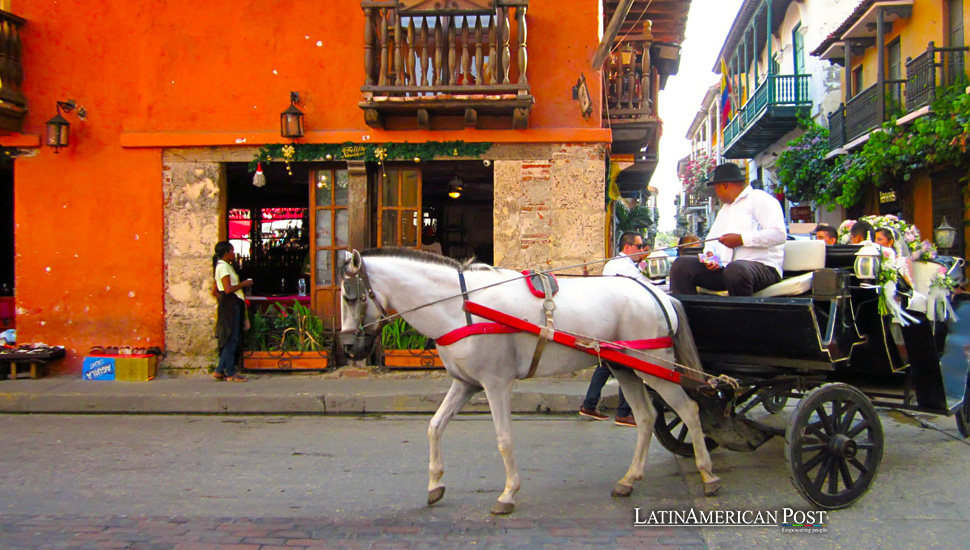Colombia’s Cartagena Shifts to Electric Carriages Seeking Sustainable Future

Cartagena de Indias, Colombia, begins transitioning from traditional horse-drawn carriages to electric vehicles, aiming to enhance tourism sustainability and address animal welfare concerns, heralding a new era in the city’s vibrant history.
Embracing Change: Cartagena’s Transition to Electric Carriages
Cartagena de Indias, a jewel in Colombia’s historical and touristic crown, is embarking on a transformative journey. The city has initiated the transition from its iconic horse-drawn carriages, a key tourist attraction and a subject of animal welfare criticism, to innovative electric carriages. This move marks a significant shift in the city’s approach to tourism, animal rights, and environmental sustainability.
These horse-drawn carriages, once the pride of Cartagena’s old town, traversing its narrow streets at dusk, have carried famous artists, influential business leaders, and even presidents. However, their charm has been overshadowed by growing concerns over animal mistreatment, including incidents of horses collapsing or dying from exhaustion and dehydration while pulling heavily loaded carts.
A Harmonious Blend: Tradition Meets Modernity
Introducing an electric carriage prototype responds to these concerns, representing a harmonious blend of tradition and modernity. This initiative aims to protect horses and utilize clean energy for propulsion, aligning with global environmental trends and local sustainability goals.
Cartagena’s Mayor Dumek Turbay envisions completing this transition by the end of 2024 to replace all animal-drawn carriages with electric ones. This vision reflects a broader ambition for Cartagena to become an environmentally friendly and sustainable tourist destination.
Colombian comedian and electric vehicle advocate Alejandro Riaño supports this transition, emphasizing the need to embrace new technologies to enjoy Cartagena’s heritage while protecting animals and the environment. The latest electric carriage, priced at around $25,560, can carry up to four passengers plus the driver. It retains the aesthetic of traditional horse-drawn carriages. It includes modern amenities like a protective canopy and a stereo system that mimics horse sounds, blending the old with the new.
Silent and Sustainable: A Symbol of Positive Change
This silent, eco-friendly vehicle represents a step towards a more sustainable and ethical tourism model. Mayor Turbay’s vision for Cartagena is environmental friendliness and sustainable tourism, with these new electric carriages as a powerful symbol of positive change.
The transition also aims to support traditional carriage drivers, transforming them into “serious tourism operators.” The city plans to provide seed capital, knowledge transfer, and support to help them adapt to this change, enhancing their quality of life and income.
Cartagena’s history is steeped in colonial charm and vibrant culture. The horse-drawn carriages have long been a part of this heritage, reminiscent of the city’s past as a major port in the Spanish empire. However, as global awareness of animal rights and environmental issues has grown, Cartagena’s move to electric carriages reflects a progressive shift in preserving its historical charm while adapting to contemporary values.
Balancing Heritage and Modern Values
Cartagena’s initiative sets a precedent in the broader context of Colombia’s tourism industry. It reflects a growing recognition of the need to balance historical preservation with modern sustainability and ethical considerations. This transition is particularly significant in a country where tourism is a vital economic sector and a source of national pride.
Also read: Daniela Mercury Electrifies Brazil with First Rio Carnival Parade
Cartagena’s introduction of electric carriages is a groundbreaking move, signaling a shift towards a more sustainable and ethical approach to tourism. It addresses animal welfare concerns and aligns with global environmental initiatives, setting an example for other historical cities facing similar challenges. This initiative represents a blend of tradition and innovation, ensuring that Cartagena continues to captivate visitors while respecting its natural and cultural heritage. As this transition unfolds, it will undoubtedly serve as a model for sustainable urban development and responsible tourism in Colombia and beyond.




